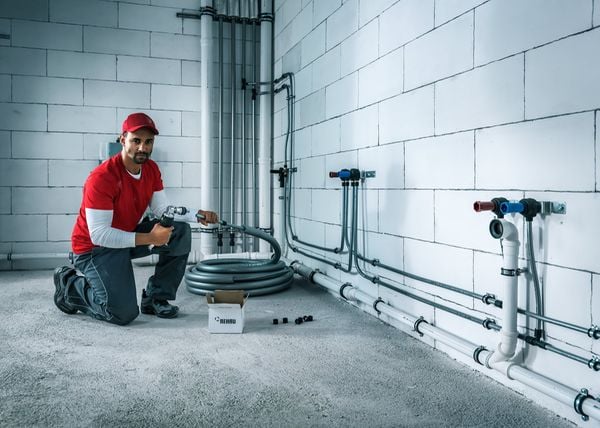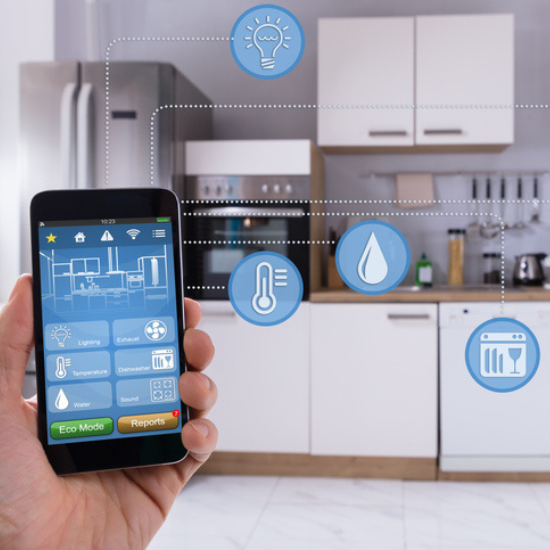This great article which follows about Innovative Plumbing Trends Transforming Construction is particularly intriguing. Don't miss it.

Introduction
The pipes market is going through a transformative phase driven by technological improvements and growing concerns for sustainability and effectiveness. This short article checks out arising fads and technologies forming the future of pipes.
Governing Landscape
Regulatory frameworks play a crucial function in shaping the fostering of pipes innovations, with standards and codes governing everything from water performance to item security. As technologies continue to evolve, regulative bodies need to adapt to make certain consumer defense and environmental stewardship.
Future Expectation
The future of plumbing is defined by continued technology and integration with various other industries such as IoT, renewable resource, and structure automation. By embracing lasting practices, leveraging arising modern technologies, and focusing on user-centric layout, the pipes industry is positioned to address the advancing requirements of culture while decreasing its ecological impact.
Increased Fact in Pipes
Enhanced Reality (AR) technology is reinventing pipes by giving technicians with real-time visual assistance for troubleshooting and fixing tasks. AR-enabled smart glasses or mobile applications overlay electronic details onto the physical atmosphere, helping plumbers envision pipe designs, recognize concealed leaks, and implement repair services with precision.
Influence of 3D Printing
The development of 3D printing has introduced brand-new possibilities in making pipes components. From custom-designed fixtures to complex pipe fittings, 3D printing enables quick prototyping and on-demand manufacturing, decreasing lead times and allowing higher modification in pipes style.
Health and Safety Characteristics
In action to increased issues for health and safety, pipes fixtures are including functions such as antimicrobial surfaces, touchless procedure, and self-cleaning mechanisms. These innovations not just enhance hygiene yet also advertise customer comfort and comfort.
Hygiene-focused Fixtures
Touchless faucets, self-sanitizing bathrooms, and antimicrobial surface areas are becoming progressively widespread in domestic and industrial settings, lessening the threat of bacterium transmission and advertising a cleaner, much healthier setting.
Water High Quality Tracking
Innovations in water high quality tracking technologies make it possible for homeowners to monitor the purity and safety of their supply of water in real-time. Smart water high quality sensors can spot impurities, pH degrees, and temperature variants, encouraging users to take aggressive actions to make sure water safety.
Remote Plumbing Solutions
Remote diagnostics and digital aid are transforming the means plumbing services are delivered. Through video clip conferencing and remote accessibility technologies, plumbings can fix problems, give guidance for DIY repairs, and also do remote examinations, offering greater ease of access and ease to homeowners.
Challenges and Opportunities
While pipes developments hold immense assurance, they likewise existing difficulties such as information privacy problems, regulatory conformity, and the demand for workforce training. Resolving these challenges needs collaboration between industry stakeholders and regulatory bodies to make certain secure and liable implementation of new modern technologies.
Smart Plumbing Equipments
Incorporating clever innovation right into pipes systems allows remote surveillance, leakage detection, and automated upkeep. Smart sensing units and IoT (Internet of Points) gadgets enable house owners and plumbing professionals to keep track of water use and detect concerns in real-time, causing much more efficient source administration and proactive maintenance.
Water Effectiveness Solutions
With increasing emphasis on water preservation, innovative options are being created to decrease water waste in plumbing systems. High-efficiency components, greywater recycling systems, and clever watering controllers are among the technologies assisting consumers lower their water impact while maintaining comfort and benefit.
Sustainable Materials
The shift in the direction of sustainability includes pipes materials, with a growing choice for environmentally friendly choices. Eco-friendly piping materials, such as PEX (cross-linked polyethylene) and HDPE (high-density polyethylene), deal toughness and resistance to rust without compromising environmental integrity.
Predictive Upkeep
Anticipating upkeep techniques take advantage of data analytics and machine learning formulas to prepare for and stop pipes concerns before they happen. By examining historic information and efficiency metrics, predictive upkeep algorithms can identify patterns and abnormalities, allowing aggressive interventions to stay clear of expensive repairs and disruptions.
Conclusion
To conclude, the future of plumbing is specified by a merging of technology, sustainability, and user-centric design. By accepting clever options, sustainable materials, and aggressive maintenance practices, the plumbing sector can enhance effectiveness, promote security, and contribute to an extra lasting future.
Plumbing Industry Trends You Need To Know
Smart technology in plumbing
Homeowners want to be able to manage their homes from their phones. The technology exists to make that happen. From smart toilets to leak detector devices, the whole plumbing system can be managed on an interconnected network made up of sensors, IoT devices, and machine learning algorithms.
This allows for wireless control to turn appliances on and off, automate routines, and access advanced monitoring to track water usage and flag potential issues. Smart technology streamlines water consumption, maintenance and energy usage, creating a more efficient system.
Green plumbing
The data analysis possible with smart technology not only improves convenience and cost-effectiveness but also fulfills a high-priority customer desire – sustainability. Consumers are very aware of their impact on the planet and want plumbing solutions to reduce damage and support sustainability. Eco-friendly plumbing solutions are already starting to emerge.
Customers can opt for low-flow toilets, water-saving faucets, and connections to sustainable energy sources. Beyond monitoring water consumption, customers can conserve water through the installation of greywater systems. This is a system that collects water that has been used but is still clean enough for some household uses such as toilet flushing.
Shorter product pipeline
To keep up with modern plumbing, plumbers need modern tools that enable them to complete jobs more efficiently. One technology making strides in this area is 3D printing. By 3D printing key plumbing fixtures, plumbers can reduce wait times even for specialized fixtures. It minimizes delays often seen in traditional manufacturing that frustrate customers and prevent plumbers from taking on more work.
Off-site repairs
Augmented reality is making a splash in many industries including plumbing. Plumbers can map a building online so they can explore the plumbing system through augmented reality, identifying areas of maintenance and repair completely digitally. This technology can be applied quite widely in plumbers’ work including planning installations and training new recruits. It’s safer, smarter and more efficient.
Low-footprint materials
Another way for plumbing companies to reduce their environmental footprint and meet the customer demand for sustainability is by using recycled materials in their work. The products they source and manufacture such as pipes, fixtures and faucets can be made from recycled materials. This saves the planet while being just as effective.
Onsite water purification
Additionally, plumbing companies can be advocates of water conservation and ease the financial and environmental concerns of customers by offering water purification systems. New water purification technology such as reverse osmosis systems and UV systems make it possible for homeowners and business owners to thoroughly cleanse water, removing contaminants onsite. This means the water can be safely reused in more ways than greywater can be, establishing a water recycling loop.
Tankless water heaters
Another innovation of modern plumbing is tankless water heaters. The idea is that the water is heated on demand as it runs through the system instead of being heated in a water tank. This is more energy efficient and therefore cost-effective and eco-friendly because water isn’t heated needlessly.

We were introduced to that editorial on The Future of Plumbing: Trends and Innovations to Watch through a friend on our other website. Do you know about another person who is interested in the niche? Do not hesitate to share it. Thanks so much for your time spent reading it.
Call